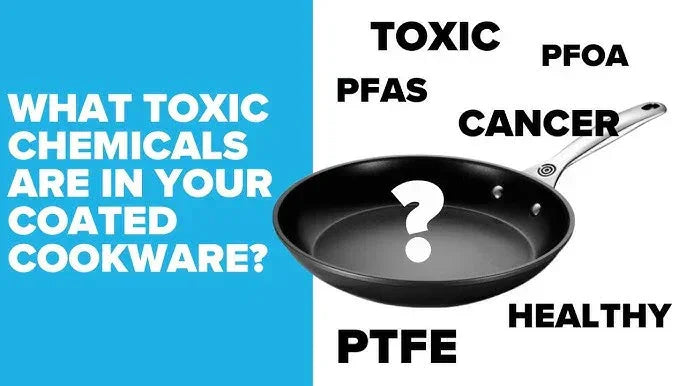
Aug 29 , 2025
0 Comments
How can I identify if a non-stick cookware contains PFOA or PTFE
Understanding PFOA and PTFE in Non-Stick Cookware: A Guide to Safer Cooking
Non-stick cookware has become a staple in many kitchens due to its ease of use and cleaning. However, concerns about the safety of certain chemicals used in these products have led to increased scrutiny. Two key substances often discussed are PFOA (Perfluorooctanoic Acid) and PTFE (Polytetrafluoroethylene). Here’s a detailed look at these chemicals, their differences, and how you can make informed choices for safer cooking.
What is PFOA?
- Definition: PFOA is a synthetic chemical that was widely used as an additive in the production of non-stick coatings like Teflon.
- Environmental Impact: Known as a “forever chemical,” PFOA persists in both the environment and human bodies, leading to significant health concerns.
- Health Risks: Linked to various health issues, including cancer risks, reproductive problems, and developmental issues.
- Current Status: Due to its harmful effects, the use of PFOA has been largely phased out since 2015.
What is PTFE?
- Definition: PTFE is a synthetic polymer commonly known by brand names like Teflon. It provides non-stick properties due to its low friction coefficient.
- Safety Profile: Generally considered safe when used correctly; however, it can release toxic fumes if heated above 260°C (500°F).
- Applications: Widely used not only in cookware but also in industrial applications requiring low friction surfaces.
Key Differences Between PFOA and PTFE
| Feature | PFOA | PTFE |
|---|---|---|
| Chemical Nature | Monomer additive for non-stick coatings | Polymer forming non-stick surfaces |
| Environmental Persistence | Highly persistent (“forever chemical”) | Less persistent than PFAS like PFOA but durable |
| Health Concerns | Probable carcinogen; phased out due to health risks | Generally safe at room temperature; potential toxicity when overheated |
Identifying If Your Cookware Contains These Chemicals
-
Check Labels & Packaging:
- Look for certifications stating “PFOA-free” or “PFAS-free.”
- Check if it mentions “Teflon” or “PTFE.”
-
Manufacturer Information:
- Visit the manufacturer’s website or contact them directly for details on their coating materials.
-
Age of Cookware:
- Older pans might contain residual amounts of harmful chemicals unless specified otherwise.
-
Purchase from Reputable Sources:
- Ensure you buy from regulated markets where newer products adhere to safety standards.
Alternatives for Safer Cooking
Ceramic-Coated Non-Stick Cookware
Ceramic-coated pans offer an excellent alternative with several benefits:
- Chemical-Free: Free from PFAS/PFOS/PFTE/PFNA/GenX
- High Temperature Resistance: Can withstand higher temperatures than traditional non-stick coatings without releasing toxic fumes
However, ceramic coatings may lose their non-stick properties faster than traditional options
Cast Iron or Carbon Steel
While not inherently non-stick without seasoning or oiling:
- Durability: Extremely durable with proper care.
- Heat Retention: Excellent heat retention capabilities.
- Versatility: Suitable for high heat cooking methods such as searing.
Safety Tips When Using Non-Stick Cookware
- Avoid overheating your pan beyond recommended temperatures (usually below 400°F/200°C)
- Use gentle utensils like silicone or wooden spoons
- Clean gently by hand rather than using abrasive cleaners
conclusion
While modern cookware tends towards safer alternatives like ceramic-coated pans due to environmental concerns over PFAS/PFOS/PTFE/PFNA/GenX compounds, understanding what your current pots might contain helps ensure healthier cooking practices at home. By choosing wisely between available options—be it sticking with well-maintained traditional Teflon pans under controlled conditions or opting for newer ceramic alternatives—you can enjoy both convenience and peace of mind while preparing meals safely every day!
